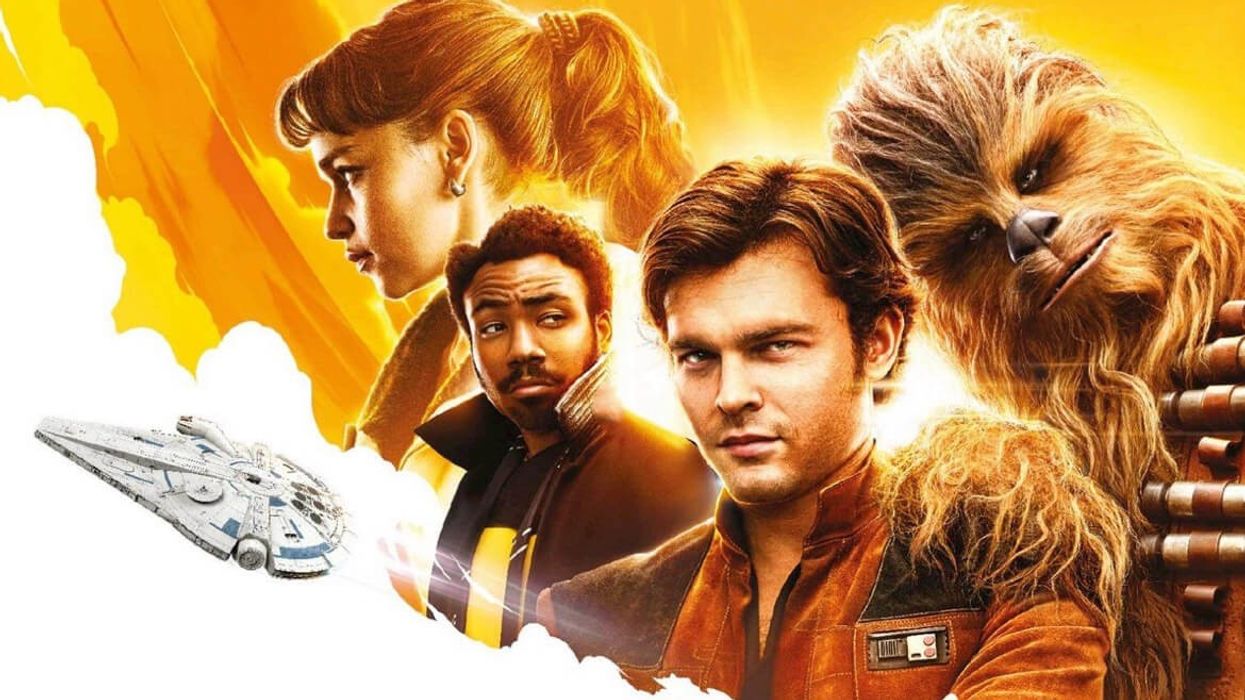Get to Know the Creative Team Behind 'Solo: A Star Wars Story'
With one week to go before 'Solo: A Star Wars Story' hits theaters, these are the players behind the camera.

While it may be hard to believe, we're just one week out from another film in theStar Wars canon hitting theaters. The second "Star Wars Story" entry (ie. a film that exists in the Star Wars universe but does not directly intersect with episodes one through nine), Solo tells the origin story of one Han Solo, the guns-blazing, Millenium Falcon-owning, Wookie-befriending pilot originally played by Harrison Ford and now brought to youthful life by Alden Ehrenreich. Other familiar characters are set to return as well, including Lando Calrissian (now played by Donald Glover) and Chewbacca (played by Joonas Suotamo).
Much will be made of the performances being given by the star-studded cast in front of the camera—Paul Bettany, Woody Harrelson, Emilia Clarke, Thandie Newton, and Paul Bettany? Okay!—but, in anticipation of the film's landing on Earth in a few days (after having premiered at the 2018 Cannes Film Festival), we wanted to take a moment to highlight the men and women who did the heavy-lifting behind the camera. It takes a lot of compromises to shoot a film in a galaxy far, far away (imagine the transportation costs), but they pulled it off, and you can meet the key players below.
BTS footage of Solo: A Star Wars Story
While this is pretty brief, it does provide a quick behind-the-scenes look at the on-set production, including quick soundbites from those in charge of the special creature effects, makeup and hair, and cinematography. Blink and you'll miss a shot of DP Bradford Young shooting Chewbacca and Warwick Davis up close in a windy desert.
Ron Howard (Director)
Ron Howard joined on as Solo's director pretty late in the production, an odd occurrence brought about due to original directors Phil Lord and Chris Miller leaving over creative differences with Disney. Howard, having been mightily familiar with the Star Wars universe (heck, he was even in George Lucas 1973 hit American Graffiti), completed the film and oversaw additional reshoots.
"It's akin to coming in as a manager or a coach mid-season," Howard admits in the video above when asked about having to take hold of the directorial reigns. But, the final credits do list Ron Howard as sole director of the project, and several of his trademarks, such as a cameo by his longtime wife, are represented.
Lawrence Kasdan and Jonathan Kasdan (Screenwriters)
Even if you're just a casual Star Wars fan, the name Lawrence Kasdan probably rings a few bells, his name having been attributed to the screenplays forThe Empire Strikes Back, Return of the Jedi, and The Force Awakens. An accomplished director in his own right (The Big Chill and The Accidental Tourist), Kasdan's words have long permeated through sci-fi culture, and for this latest endeavor, he brings his son Jonathan along for the ride. The younger Kasdan's writing credits include select episodes of Dawson's Creek and Freaks and Geeks, so a lighter tone (already apparent from the film's marketing materials) feels assured.
Kathleen Kennedy (Producer)
One of the most successful film producers of all time, Kathleen Kennedy is currently the most influential creative mind behind the Star Wars franchise. Serving as Lucasfilm president, all decisions, from the top-down, have to be approved by Kennedy; one could argue that her current role makes a strong case for considering the "producer as auteur." As the video above shows, Kennedy has to oversee numerous Star Wars projects simultaneously, and with that, some tough decisions—including knowing when to conclude a series—must be made.
Simon Emanuel (Producer)
Formerly serving as a Production Manager on Star Wars: The Force Awakens and Rogue One: A Star Wars Story, Emanuel has now "graduated" to the role of Producer on Solo, and his experience working on mega-budget franchises is pretty substantial, having also been a Production Manager on four Harry Potter films, The Dark Knight Rises, and Fast & Furious 6.
Bradford Young (Director of Photography)
DP Bradford Young is currently one of the world's most sought-after cinematographers, having netted an Oscar nomination for shooting Denis Villeneuve's Arrival in 2016 and working with the likes of Ava DuVernay (Selma), J.C. Chandor (A Most Violent Year), and Edward Zwick (Pawn Sacrifice).
And if you think cinematography may go unheralded in a Star Wars film due to a potentially homogenized visual style—quick: who shot Rogue One: A Star War Story two years ago?—it's clear that this particular production is going for a more gritty, less beautifully sheen look that's meant to ground its ethereal texture. How does Young do it? Learn more about his process (and advice for upcoming cinematographers) above.
Pietro Scalia (Editor)
Two-time Academy Award-winning editor Pietro Scalia edits his first Star Wars entry with Solo, and the long-time collaborator of one Sir Ridley Scott came onto this project after editing another feature taking place in a far-off galaxy. (Alien: Covenant). In a video created by Avid a few years back, the expert editor noted that "you should [be able] to follow a story silently, just by looking at the visuals. It's cinema. It's moving images." Will anyone be watching Solo with the sound off? Maybe not, but it does feel like a film with universal appeal due to its colorful images, kinetic edits, and high octane energy.
John Powell (Composer)
John Powell has been providing original scores for feature films for decades now, beginning with John Woo's Face/Off in the summer of 1997 and working with directors as wide-ranging as Doug Liman, Martin Brest, and F. Gary Gray. He's also had a quite a run of scoring animated features (he received an Oscar nomination for his work on How to Train Your Dragon) and if Solo is any indication, it feels like the perfect fit for his style: both thematically grounded and whimsically otherworldly.











